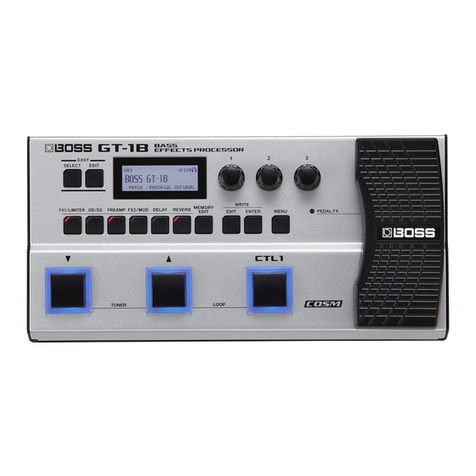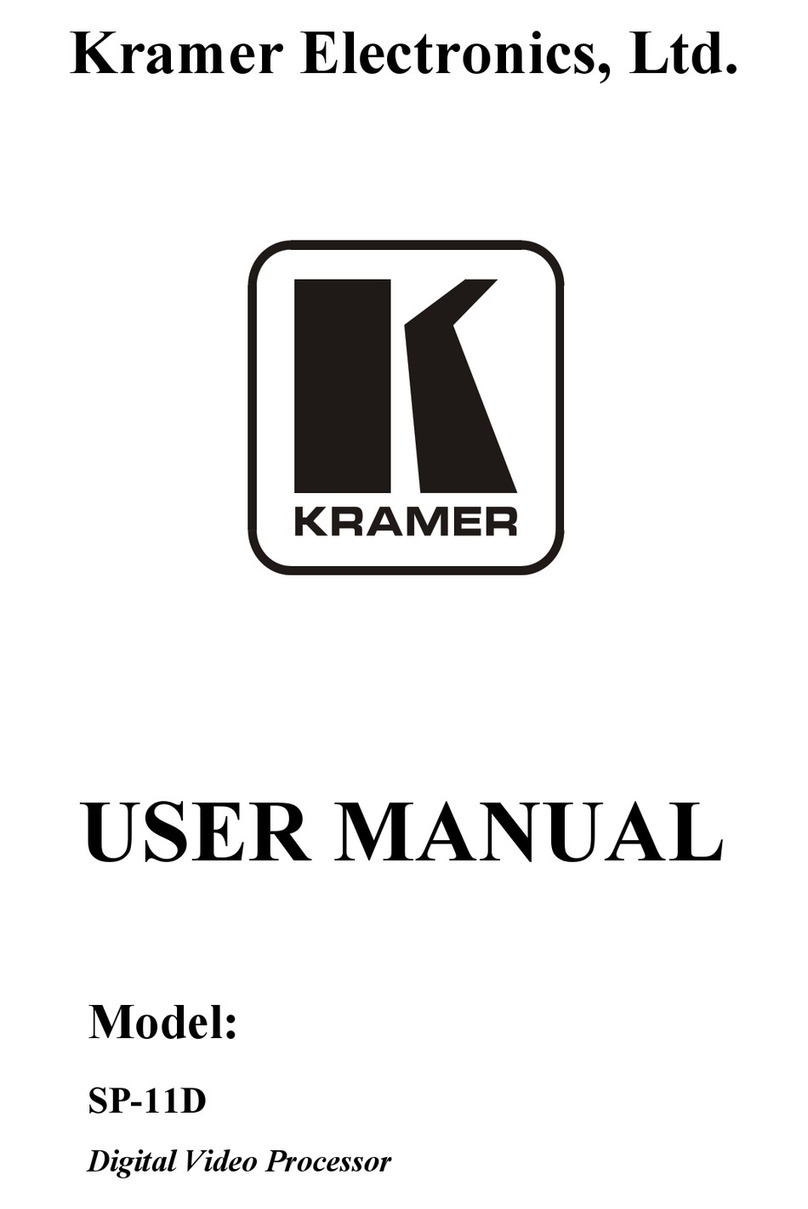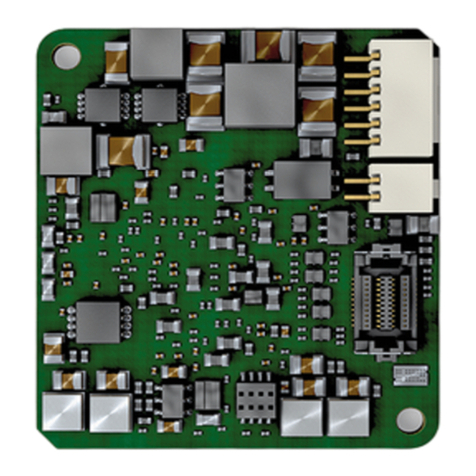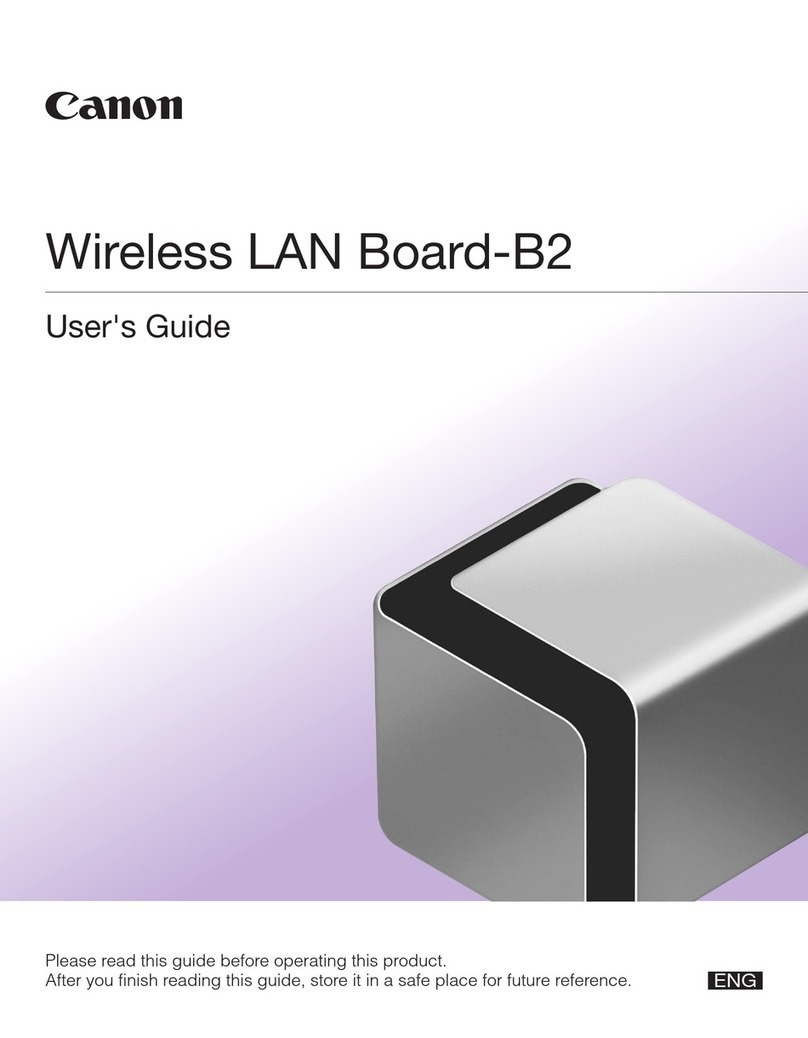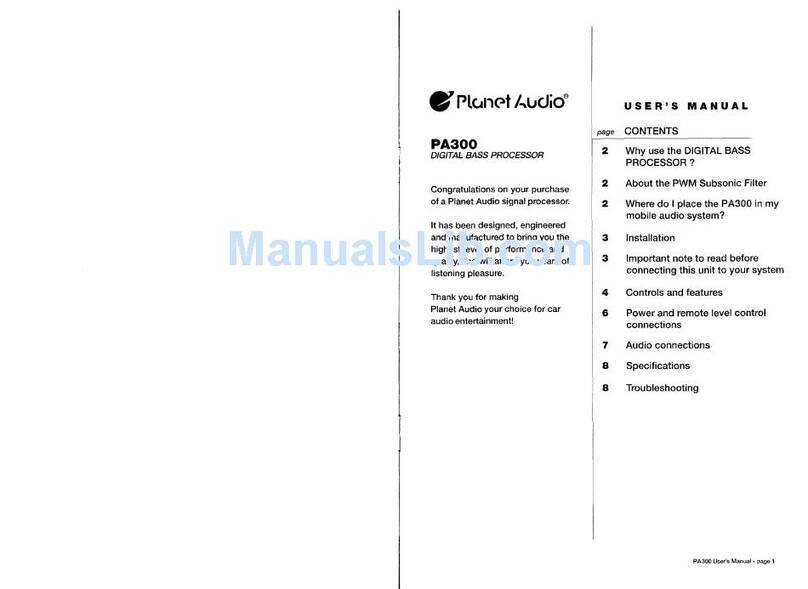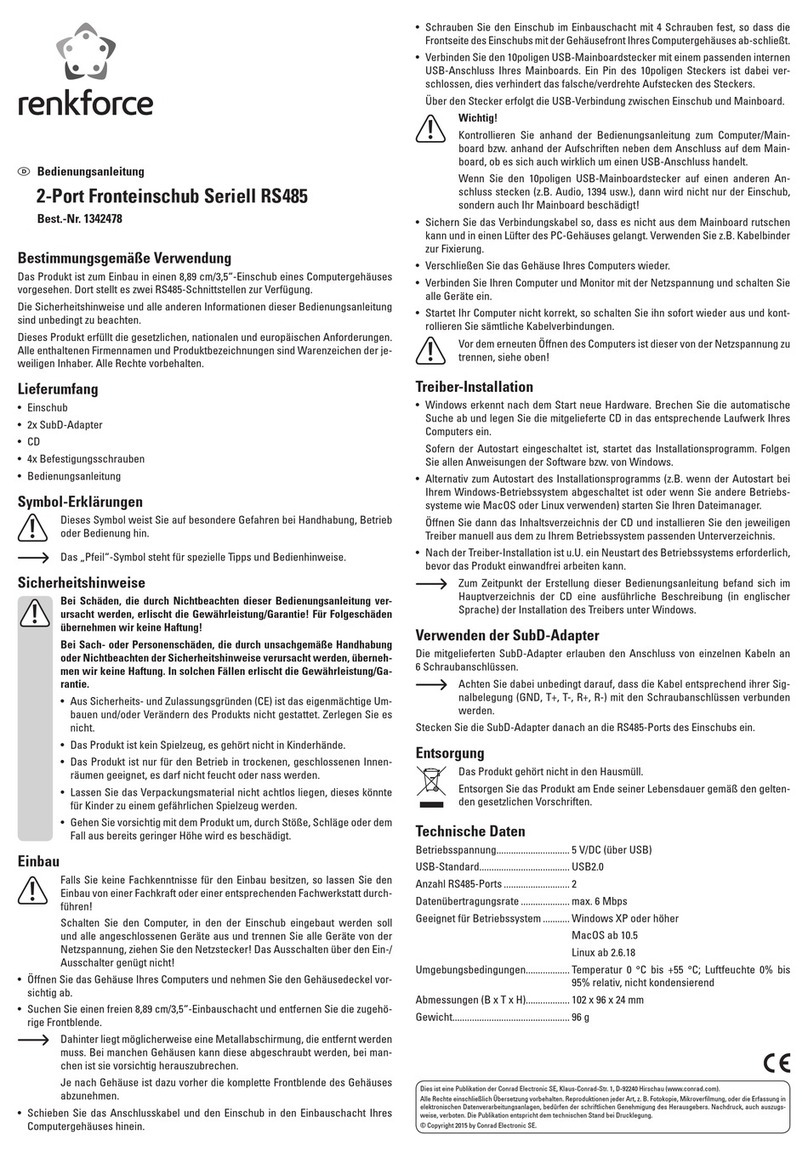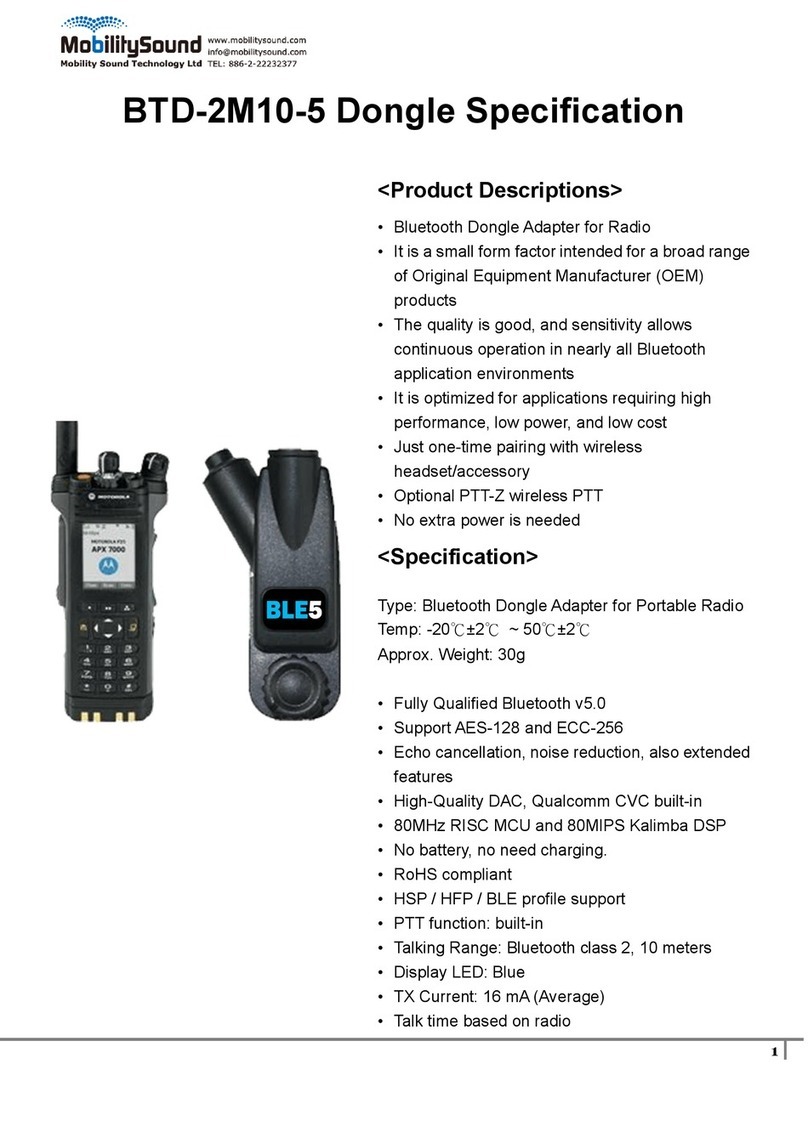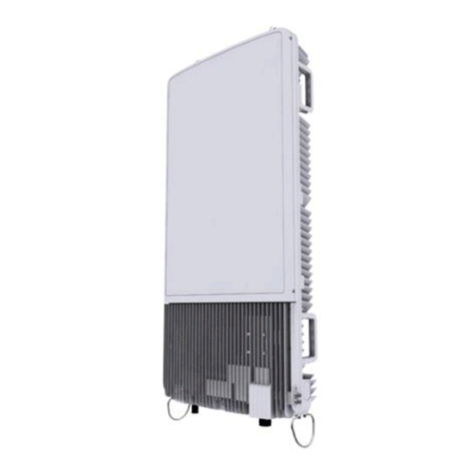BOSSCO AD-3 User manual

OWNER’S MANUAL
AD-3.cover.e_B5 07.6.7 1:25 PM Page 2

• Before using this unit, make sure to read the
instructions below, and the Owner’s Manual.
..........................................................................................................
• Do not open (or modify in any way) the unit or its
AC adaptor.
..........................................................................................................
• Do not attempt to repair the unit, or replace parts
within it (except when this manual provides specif-
ic instructions directing you to do so). Refer all ser-
vicing to your retailer, the nearest Roland Service
Center, or an authorized Roland distributor, as list-
ed on the “Information” leaflet.
..........................................................................................................
• Never use or store the unit in places that are:
• Subject to temperature extremes (e.g., direct sun-
light in an enclosed vehicle, near a heating duct,
on top of heat-generating equipment); or are
• Damp (e.g., baths, washrooms, on wet floors); or
are
• Exposed to rain; or are
• Humid; or are
• Dusty; or are
• Subject to high levels of vibration.
..........................................................................................................
• Make sure you always have the unit placed so it is
level and sure to remain stable. Never place it on
stands that could wobble, or on inclined surfaces.
..........................................................................................................
• Use only the specified AC adaptor (PSA-Series),
and make sure the line voltage at the installation
matches the input voltage specified on the AC
adaptor’s body. Other AC adaptors may use a dif-
ferent polarity, or be designed for a different volt-
age, so their use could result in damage, malfunc-
tion, or electric shock.
..........................................................................................................
• Avoid damaging the power cord. Do not bend it
excessively, step on it, place heavy objects on it, etc.
A damaged cord can easily become a shock or fire
hazard. Never use a power cord after it has been
damaged.
..........................................................................................................
• This unit, either alone or in combination with an
amplifier and headphones or speakers, may be
capable of producing sound levels that could cause
permanent hearing loss. Do not operate for a long
period of time at a high volume level, or at a level
that is uncomfortable. If you experience any hear-
ing loss or ringing in the ears, you should immedi-
ately stop using the unit, and consult an audiolo-
gist.
..........................................................................................................
• Do not allow any objects (e.g., flammable material,
coins, pins); or liquids of any kind (water, soft
drinks, etc.) to penetrate the unit.
..........................................................................................................
2
The symbol alerts the user to important instruc-
tions or warnings.The specific meaning of the symbol
is determined by the design contained within the
triangle. In the case of the symbol at left, it is used for
general cautions, warnings, or alerts to danger.
The symbol alerts the user to items that must
never be carried out (are forbidden). The specific
thing that must not be done is indicated by the
design contained within the circle. In the case of the
symbol at left, it means that the unit must never be
disassembled.
Used for instructions
intended to alert the user to
the risk of injury or material
damage should the unit be
used improperly.
*Material damage refers to
damage or other adverse
effects caused with respect
to the home and all its
furnishings, as well to
domestic animals or pets.
Used for instructions
intended to alert the user to
the risk of death or severe
injury should the unit be
used improperly.
The ●symbol alerts the user to things that must be
carried out. The specific thing that must be done is
indicated by the design contained within the circle.
In the case of the symbol at left, it means that the
power-cord plug must be unplugged from the outlet.
AD-3.e 07.6.7 1:22 PM Page 2

• Immediately turn the power off, remove the AC
adaptor from the outlet, and request servicing by
your retailer, the nearest Roland Service Center, or
an authorized Roland distributor, as listed on the
“Information” leaflet when:
• The AC adaptor or the power-supply cord has
been damaged; or
• Objects have fallen into, or liquid has been
spilled onto the unit; or
• The unit has been exposed to rain (or otherwise
has become wet); or
• The unit does not appear to operate normally or
exhibits a marked change in performance.
..........................................................................................................
• In households with small children, an adult should
provide supervision until the child is capable of
following all the rules essential for the safe opera-
tion of the unit.
..........................................................................................................
• Protect the unit from strong impact.
(Do not drop it!)
..........................................................................................................
• Do not force the unit’s power-supply cord to share
an outlet with an unreasonable number of other
devices. Be especially careful when using extension
cords—the total power used by all devices you
have connected to the extension cord’s outlet must
never exceed the power rating (watts/amperes) for
the extension cord. Excessive loads can cause the
insulation on the cord to heat up and eventually
melt through.
..........................................................................................................
• Before using the unit in a foreign country, consult
with your retailer, the nearest Roland Service
Center, or an authorized Roland distributor, as list-
ed on the “Information” leaflet.
..........................................................................................................
• Batteries must never be recharged, heated, taken
apart, or thrown into fire or water.
..........................................................................................................
• The unit and the AC adaptor should be located so
their location or position does not interfere with
their proper ventilation.
..........................................................................................................
• Always grasp only the plug or the body of the AC
adaptor when plugging into, or unplugging from,
an outlet or this unit.
..........................................................................................................
• Whenever the unit is to remain unused for an
extended period of time, disconnect the AC adaptor.
..........................................................................................................
• Try to prevent cords and cables from becoming
entangled. Also, all cords and cables should be
placed so they are out of the reach of children.
..........................................................................................................
• Never climb on top of, nor place heavy objects on
the unit.
..........................................................................................................
• Never handle the AC adaptor body, or its plugs,
with wet hands when plugging into, or unplugging
from, an outlet or this unit.
..........................................................................................................
• Before moving the unit, disconnect the AC adaptor
and all cords coming from external devices.
..........................................................................................................
• Before cleaning the unit, turn off the power and
unplug the AC adaptor from the outlet (p. 8).
..........................................................................................................
• Whenever you suspect the possibility of lightning in
your area, disconnect the AC adaptor from the outlet.
..........................................................................................................
• If used improperly, batteries may explode or leak
and cause damage or injury. In the interest of safe-
ty, please read and observe the following precau-
tions (p. 8).
• Carefully follow the installation instructions for
batteries, and make sure you observe the correct
polarity.
• Avoid using new batteries together with used
ones. In addition, avoid mixing different types
of batteries.
• Remove the batteries whenever the unit is to
remain unused for an extended period of time.
• If a battery has leaked, use a soft piece of cloth
or paper towel to wipe all remnants of the dis-
charge from the battery compartment. Then
install new batteries. To avoid inflammation of
the skin, make sure that none of the battery dis-
charge gets onto your hands or skin. Exercise the
utmost caution so that none of the discharge gets
near your eyes. Immediately rinse the affected
area with running water if any of the discharge
has entered the eyes.
• Never keep batteries together with metallic
objects such as ballpoint pens, necklaces, hair-
pins, etc.
..........................................................................................................
• Used batteries must be disposed of in compliance
with whatever regulations for their safe disposal that
may be observed in the region in which you live.
..........................................................................................................
3
AD-3.e 07.6.7 1:22 PM Page 3

USING THE UNIT SAFELY ..................................................2
IMPORTANT NOTES ............................................................5
Introduction .........................6
Main Features ..........................................................................6
Panel Descriptions................7
The Power Supply................8
Loading the Batteries..............................................................8
Using an AC Adaptor.............................................................8
Getting Ready to Play ..........9
Connections..............................................................................9
Turning the Power On..........................................................10
Turning the Power Off ........................................................10
Making the Settings ...........11
Adjusting the Input Level....................................................11
Adding Breadth to the Sounds (2 x 2 Chorus)..................11
Adding Reverberations to the Sounds (Reverb)...............12
Playing with a Guitar Amp
(Acoustic Guitar Amp Simulator) ................................12
Adjusting the Bass Sound (Bottom) ...................................13
Adjusting the Treble Sound (Top)......................................13
Reducing Acoustic Feedback (Anti-feedback)..................14
Making the Setting with the Knob
(the Anti-feedback Knob) .............................................14
Automatic Detection with the Pedal
(the Anti-feedback Auto Pedal) ...................................14
Switching On the Anti-feedback Auto Function.............15
Redoing Automatic Detection............................................15
Switching Off the Anti-feedback Auto Function ............15
Appendices ........................16
Troubleshooting ....................................................................16
Block Diagram .......................................................................16
Setting Samples .....................................................................17
Blank Chart ............................................................................18
Specifications .........................................................................19
Contents
4
AD-3.e 07.6.7 1:22 PM Page 4

IMPORTANT NOTES
In addition to the items listed under “USING THE UNIT SAFELY” on page 2, please read and observe the following:
5
Power Supply: Use of Batteries
• Do not use this unit on the same power circuit with any
device that will generate line noise (such as an electric
motor or variable lighting system).
• The AC adaptor will begin to generate heat after long
hours of consecutive use. This is normal, and is not a
cause for concern.
• The use of an AC adaptor is recommended as the unit’s
power consumption is relatively high. Should you pre-
fer to use batteries, please use the alkaline type.
• When installing or replacing batteries, always turn off
the power on this unit and disconnect any other
devices you may have connected. This way, you can
prevent malfunction and/or damage to speakers or
other devices.
• Batteries are supplied with the unit. The life of these
batteries may be limited, however, since their primary
purpose was to enable testing.
• Before connecting this unit to other devices, turn off the
power to all units. This will help prevent malfunctions
and/or damage to speakers or other devices.
Placement
• Using the unit near power amplifiers (or other equip-
ment containing large power transformers) may induce
hum. To alleviate the problem, change the orientation
of this unit; or move it farther away from the source of
interference.
• This device may interfere with radio and television
reception. Do not use this device in the vicinity of such
receivers.
Maintenance
• For everyday cleaning wipe the unit with a soft, dry
cloth or one that has been slightly dampened with
water. To remove stubborn dirt, use a cloth impregnat-
ed with a mild, non-abrasive detergent. Afterwards, be
sure to wipe the unit thoroughly with a soft, dry cloth.
• Never use benzine, thinners, alcohol or solvents of any
kind, to avoid the possibility of discoloration and/or
deformation.
Additional Precautions
• Use a reasonable amount of care when using the unit’s
buttons, sliders, or other controls; and when using its
jacks and connectors. Rough handling can lead to mal-
functions.
• When connecting/disconnecting all cables, grasp the
connector itself—never pull on the cable. This way you
will avoid causing shorts, or damage to the cable’s
internal elements.
• To avoid disturbing your neighbors, try to keep the
unit’s volume at reasonable levels (especially when it is
late at night).
• When you need to transport the unit, package it in the
box (including padding) that it came in, if possible.
Otherwise, you will need to use equivalent packaging
materials.
AD-3.e 07.6.7 1:22 PM Page 5

Thank you, and congratulations on your choice of the BOSS AD-3 Acoustic Instrument Processor.
●●●●●●●●●●●●●●●●●●●●●●●●●●●●●●●●●●●●●●●●●●●●●●●●●●●●●●●●●●●●●●●●●●●●●●●●●●●●●●●●●●●●●●●●●●●●●●●●●●●●●●●●●●●●●●●●●●●●●●●●●●●●●●●●●●●●●●●●●●●●●●●●●●●●●●●●●●●●●●●●●●●●●●●●●●●●●●●●●●●
Before using this unit, carefully read the sections entitled: “USING THE UNIT SAFELY” and “IMPORTANT
NOTES” (p. 2; p. 5). These sections provide important information concerning the proper operation of the unit.
Additionally, in order to feel assured that you have gained a good grasp of every feature provided by your new
unit, this manual should be read in its entirety. The manual should be saved and kept on hand as a convenient
reference.
●●●●●●●●●●●●●●●●●●●●●●●●●●●●●●●●●●●●●●●●●●●●●●●●●●●●●●●●●●●●●●●●●●●●●●●●●●●●●●●●●●●●●●●●●●●●●●●●●●●●●●●●●●●●●●●●●●●●●●●●●●●●●●●●●●●●●●●●●●●●●●●●●●●●●●●●●●●●●●●●●●●●●●●●●●●●●●●●●●●
Introduction
6
Main Features
A go-anywhere, floor-type effects proces-
sor for electric acoustic guitars, designed
especially for live performances
• Equipped with two pedals (chorus and anti-
feedback auto)
• Low-profile, rugged steel body
Chorus and reverb tuned exclusively
for electric acoustic guitars
• Uses a stereo band-splitting chorus (2 x 2 cho-
rus) to apply effects separately to the bass
and treble bands
• A newly developed, built-in reverb
• The same level of quality as the full-featured
AD-5
An acoustic guitar-amp simulator you
can hook up and use with a guitar amp
• The AD-3 has an on-board acoustic guitar
amp simulator approaches the original sound
of an acoustic guitar, even with a guitar amp
Bottom and top control designed
exclusively for electric acoustic guitars
• The AD-3 has on-board bottom and top con-
trol for special filters that work differently for
boost and cutoff. This makes for a natural
acoustic sound.
Double anti-feedback reduces acoustic
feedback
• Along with the anti-feedback that sets the fre-
quency with a control knob, the AD-3 has a
built-in automatic anti-feedback function that
automatically detects the frequency by oper-
ating a pedal.
• You can use the two anti-feedback functions
at the same time.
“Anti-feedback” is a feature that reduces
acoustic feedback (howling) between the gui-
tar and amp.
Balance output
• The AD-3’s output is balanced, so you can
connect it directly to PA systems.
“Balanced output” is a system that reduces
noise when using stereo cables and so on to
send musical signals to a PA system or
another balanced device.
Dual Power Supply
• In addition to running the AD-3 off batteries
(six AA cells), you can use the AC adaptor.
This means you can use batteries for an on-
stage performance or the AC adaptor when in
your room.
MEMO
MEMO
Copyright © 1998 BOSS CORPORATION
All rights reserved. No part of this publication may be reproduced in any form without the written permis-
sion of BOSS CORPORATION.
AD-3.e 07.6.7 1:22 PM Page 6

fig.1
POWER
Indicator
ANTI-FEEDBACK Knob
BOTTOM Knob
TOP Knob
2 x 2 CHORUS Knob
REVERB Knob
PEAK
Indicator
ANTI-FEEDBACK AUTO Pedal
CHORUS Pedal
Pedal
Indicator
Pedal
Indicator
INPUT Jack
INPUT LEVEL Knob
OUTPUT SELECT Switch
OUTPUT Jack L, R
POWER Switch
AC Adaptor Jack
Cord Hook
Panel Descriptions
7
AD-3.e 07.6.7 1:22 PM Page 7

Loading the Batteries
The Power Supply
8
Make sure the “+” and “-” ends of the batteries are
oriented correctly.
fig.Batt
When the batteries are depleted, the power indica-
tor grows dark. If this happens, replace with new
batteries.
When replacing the batteries, use six AA
batteries. Also, do not mix new and old bat-
teries or batteries of different types. Doing so
may cause fluid to leak from the batteries.
Make sure the “+” and “-” ends of the bat-
teries are oriented correctly.
Battery life may vary according to battery
type.
Expected battery life under continuous use:
Alkaline: Approx. 17 hours
Carbon: Approx. 9 hours
These figures will vary depending on the
actual conditions of use.
MEMO
NOTE
NOTE
NOTE
Using an AC Adaptor
The BOSS PSA Series AC adaptor (sold separately)
can be used to run the AD-3 from a household elec-
trical outlet.
fig.PSA
Use only a dedicated AC adaptor (BOSS
PSA Series). Never try to use another AC
adaptor, because doing so may result in
incorrect operation or breakdown.
If there are batteries in the unit while an AC
adaptor is being used, normal operation will
continue should the line voltage be interrupted
(power blackout or power cord disconnection).
To prevent the inadvertent disruption of
power to your unit (should the plug be pulled
out accidentally), and to avoid applying
undue stress to the AC adaptor jack, anchor
the power cord using the cord hook, as shown
in the illustration.
fig.code
Code Hook
NOTE
MEMO
NOTE
AC Adaptor
(PSA-Series; sold separately)
AD-3.e 07.6.7 1:22 PM Page 8

Connections
Connect your guitar and amp to the AD-3 as shown below.
fig.2
Electric Acoustic Guitar Mixer Multi-track Recorder
Guitar Amplifier
Getting Ready to Play
9
If you’re using a guitar amp, connect the OUTPUT
R jack to the guitar amp and set the OUTPUT
SELECT switch to G.AMP.
If you’re using stereo output and connecting the
AD-3 to an audio amp, a mixer, a multi-track
recorder, or the like, set the OUTPUT SELECT
switch to LINE.
To prevent malfunction and/or damage to
speakers or other devices, always turn down
the volume, and turn off the power on all
devices before making any connections.
Turn on the power on all connected equip-
ment before you turn up the volume on your
amplifier.
The AD-3 supports balanced output. For balanced
output, use a commercially available stereo stan-
dard cord or a stereo (standard) ↔Canon conver-
sion cord.
fig.3
NOTE
NOTE
AD-3.e 07.6.7 1:22 PM Page 9

Turning the Power On
10
Once the connections have been completed (p. 9),
turn on power to your various devices in the order
specified. By turning on devices in the wrong
order, you risk causing malfunction and/or dam-
age to speakers and other devices.
AD-3 →Output Equipment
(Guitar Amp or Other Device)
1. Switch on the power for the AD-3.
fig.3b
The power indicator lights up and the power
comes on.
2. Turn on the output equipment.
This unit is equipped with a protection cir-
cuit. A brief interval (a few seconds) after
power-up is required before the unit will
operate normally. The peak indicator blinks
for a few seconds, then you can use the AD-3
for playing.
When running off batteries, the AD-3 won’t
switch on unless there’s something plugged
into the INPUT jack. This helps prevent run-
ning down the batteries. Be careful, because if
you unplug the equipment plugged into the
INPUT jack, the power switches off.
Turning the Power Off
Power down in the reverse order: first the output
equipment, then the AD-3.
Output Equipment
(Guitar Amp or Other Device) →AD-3
1. Turn off the output equipment.
2. Switch off the power for the AD-3.
fig.3c
NOTE
NOTE
AD-3.e 07.6.7 1:22 PM Page 10

Adjusting the Input Level
Output levels may vary greatly with the particular
guitar that’s connected. Unsuitable or incorrect lev-
els may prevent full expression of the AD-3’s abili-
ties. In such cases, adjust the Input Level knob on
the AD-3 to match the guitar’s output level.
1. Adjust the knobs as shown below.
Input Level knob MIN
Anti-feedback knob OFF
Bottom knob Centered
Top knob Centered
2 x 2 Chorus knob Left-most setting
Reverb knob OFF
fig.4
2. Adjust the Input Level knob so that
the peak indicator lights up momen-
tarily when you play the guitar
forcefully.
fig.4b
After adjusting the input level and the vari-
ous knobs, play the guitar. If the peak indica-
tor lights up frequently, then lower the input
level.
The peak indicator lights up at 6 dB below
clipping level (when distortion begins to
occur).
Adding Breadth to the
Sounds (2 x 2 Chorus)
Chorus can add a broader, thicker effect to sounds.
The chorus used in the AD-3 is a band-splitting
stereo type for acoustic guitars. Chorus can be
applied simultaneously to both bass and treble
ranges in both left and right channels.
You use the Chorus pedal on the AD-3 to toggle the
chorus effects on and off.
1. Press the Chorus pedal.
fig.5
The pedal indicator lights up to show that Chorus
is on. Press the pedal again to turn off Chorus.
2. Adjust the 2 x 2 Chorus knob.
fig.6
Turning the control knob clockwise deepens the
chorus effects. Turning it counterclockwise
lessens the effects.
fig.7
CHORUS
High Pass Filter
INPUT L
INPUT R
OUTPUT L
OUTPUT R
Low Pass Filter CHORUS
CHORUS
High Pass Filter
Low Pass Filter CHORUS
MEMO
NOTE
Making the Settings
11
AD-3.e 07.6.7 1:22 PM Page 11

Adding Reverberations
to the Sounds (Reverb)
Reverb is the reverberant effect achieved when
sounds reflected by walls and floors overlap and
blend. The actual reverb changes according to fac-
tors such as size and shape of the space (such as a
room or hall), the composition of the surface (a
wall, for example) reflecting the sound, and so on.
With the AD-3, these elements are digitally simu-
lated to obtain the optimal reverb for the acoustic
guitar.
1. Adjust the Reverb knob.
fig.8
Turning the control knob clockwise deepens the
reverb effects. Turning it counterclockwise
lessens the effects, and turning it all the way
counterclockwise turns it off.
Playing with a Guitar
Amp (Acoustic Guitar
Amp Simulator)
This feature makes what you play sound closer to
an authentic acoustic guitar, even when you’re
playing with a guitar amp hooked up.
1. Set the OUTPUT SELECT switch to
G.AMP.
fig.9
When set to G.AMP, the acoustic guitar amp sim-
ulator is on.
When on, output is as follows:
G.AMP:
Output passes through the acoustic gui-
tar amp simulator (mono)
LINE (MONO):
Output does not pass through the
acoustic guitar amp simulator (mono)
MEMO
12
AD-3.e 07.6.7 1:22 PM Page 12

Adjusting the Bass
Sound (Bottom)
This knob adjusts the sound of the guitar’s sound
box, or suppresses excess bass notes.
1. Adjust the Bottom knob.
fig.10
Setting this more toward RICH accents the rich-
ness of the sound-box reverberations, and setting
it more toward SHARP suppresses the bands that
interfere with vocals and the like, thus helping to
prevent acoustic feedback (howling). Setting it to
0 produces flat characteristics.
Adjusting the Bottom knob toward RICH
may result in distortion. If this happens,
lower the input level (p. 11).
Adjusting the Treble
Sound (Top)
This knob adjusts the harmonic components, or
suppresses the idiosyncrasies of piezo pickup
sounds.
1. Adjust the Top knob.
fig.11
Setting this more toward HARD accents the high-
er harmonics, and setting more toward SOFT sup-
presses the piezo pickup’s distinctive harshness,
for a natural sound.
Adjusting the Top knob toward HARD may
result in distortion. If this happens, lower the
input level (p. 11).
NOTE
NOTE
13
0 dB
14 dB
100 Hz 6.3 kHz
400 Hz 1 kHz
BOTTOM TOP
AD-3.e 07.6.7 1:22 PM Page 13

Reducing Acoustic Feedback (Anti-feedback)
14
Anti-feedback is a feature that reduces acoustic
feedback (howling) between the guitar and amp.
This features attenuates the sounds at the frequen-
cy where acoustic feedback occurs, thus suppress-
ing the acoustic feedback.
The AD-3 has two types of built-in anti-feedback
features. One sets the howling point with a control
knob. The other automatically detects the howling
point when you press the pedal. You can use both
of these at the same time.
If howling isn’t suppressed using just anti-
feedback, try adjusting the settings to lower
the volume, suppress the bass range, and so
on.
NOTE
Making the Setting with the Knob (the Anti-feedback Knob)
Use the control knob to adjust the frequency for
applying the anti-feedback effect and reduce howl-
ing.
It may be a good idea to set the howling point
ahead of time, such as during rehearsal.
1. Adjust the Anti-feedback knob to
lessen acoustic feedback (howling).
fig.12
Turn the knob clockwise to raise the frequency
where the anti-feedback effect is applied. Turning
the knob all the way counterclockwise switches
the effect off.
fig.13
0 dB
FREQ HL
Automatic Detection with the Pedal (the Anti-feedback Auto Pedal)
When acoustic feedback (howling) occurs, just
depress the Anti-feedback Auto pedal to automati-
cally detect the howling point and reduce the howl-
ing.
This can be handy when acoustic feedback (howl-
ing) suddenly occurs during a live performance or
a concert.
The Anti-feedback Auto pedal uses three notch fil-
ters to suppress acoustic feedback (howling) at
three points. The effect applied at each of the points
is similar to the Anti-feedback knob.
fig.fdbk
0 dB
FREQ HL
AD-3.e 07.6.7 1:22 PM Page 14

Switching On the Anti-feed-
back Auto Function
1. Press the Anti-feedback Auto pedal.
fig.14
The pedal indicator blinks while detection of the
howling point is in progress, and lights up steadi-
ly when detection ends.
Switching off the power returns the pedal to
its off state.
When there’s no input, no automatic detec-
tion is performed.
Redoing Automatic
Detection
1. Depress the pedal again.
Switching Off the Anti-feed-
back Auto Function
1. Hold down the pedal for two sec-
onds or more.
The pedal indicator blinks then goes dark, and
the Anti-feedback Auto function is switched off.
Switching off the power returns the pedal to
its off state.
NOTE
NOTE
NOTE
15
AD-3.e 07.6.7 1:22 PM Page 15

Troubleshooting
Appendices
16
If there is no sound, or if you think that the AD-3 may
be malfunctioning, please first go through the follow-
ing checkpoints. If after these checkpoints the prob-
lem is still unresolved, consult your nearest Roland
service center or authorized Roland distributor.
The Power Doesn’t Come On
Are the batteries installed correctly?
Make sure the “+” and “-” ends of the batteries
(p. 8).
Are the batteries dead?
Replace with fresh batteries (p. 8).
Is the AC adaptor (PSA-Series: sold
separately) connected correctly?
Check the connection again.
Is the guitar correctly plugged into the
INPUT jack?
Check the connection again.
When running off batteries, the AD-3 won’t
switch on unless there’s something plugged
into the INPUT jack. This helps prevent run-
ning down the batteries.
No Sound/Low Volume/Different
Volume on the Left and Right
Is the other equipment connected cor-
rectly?
Check the connections again.
Is the volume turned down on the con-
nected amp, mixer, external effects
processor, or other equipment?
Is the Input Level knob turned down
too far?
Is the Output Select switch on the rear
panel set to G.AMP?
When the switch is set to G.AMP, the sounds and
volume levels for left and right output are differ-
ent.
Sound Is Distorted (The peak
indicator lights up frequently.)
Have you adjusted the input level?
Adjust the Input Level knob (p. 11).
Have the Bottom or Top knobs been
turned too far?
When the Bottom or Top knob is turned clock-
wise too far, some input signals may be distorted.
Adjust the Input Level knob (p. 11).
Are the batteries dead?
When the batteries run down, the power indicator
grows dark, and the unit may not run normally.
Replace with fresh batteries (p. 8).
NOTE
Block Diagram
fig.15
INPUT INPUT
LEVEL
BOTTOM
/
TOP
DUAL ANTI-
FEEDBACK
2 x 2
CHORUS
REVERB
OUTPUT
SELECT
ACOUSTIC
GUITAR AMP
SIMULATOR
OUTPUT
LINE-L /
LINE (MONO)
LINE-R /
G.AMP
AD-3.e 07.6.7 1:22 PM Page 16

Setting Samples
17
Flat Back
Fusion
fig.16a
Unplugged Rock
fig.17a
70’s Folk
fig.18a
Blues
fig.19a
Round Back
Fusion
fig.16b
Unplugged Rock
fig.17b
70’s Folk
fig.18b
Blues
fig.19b
AD-3.e 07.6.7 1:22 PM Page 17

Blank Chart
fig.20
.............................................................
.............................................................
.............................................................
.............................................................
.............................................................
fig.20
.............................................................
.............................................................
.............................................................
.............................................................
.............................................................
fig.20
.............................................................
.............................................................
.............................................................
.............................................................
.............................................................
fig.20
.............................................................
.............................................................
.............................................................
.............................................................
.............................................................
18
AD-3.e 07.6.7 1:22 PM Page 18

AD-3: ACOUSTIC INSTRUMENT PROCESSOR
Specifications
19
AD Conversion
20 bit Δ∑ Method
DA Conversion
20 bit Δ∑ Method
Sample Rate
44.1 kHz
Nominal Input Level
-10 dBm
Input Impedance
4.7 MΩ
Nominal Output Level
OUTPUT: -10 dBm
OUTPUT (balanced): -10 dBm into 600 Ω
Output Impedance
OUTPUT: 300 Ω
OUTPUT (balanced): 600 Ω
Controls
INPUT LEVEL Knob
ANTI-FEEDBACK Knob
BOTTOM Knob
TOP Knob
2 x 2 CHORUS Knob
REVERB Knob
OUTPUT SELECT Switch
ANTI-FEEDBACK AUTO Pedal
CHORUS Pedal
POWER Switch
Indicators
ANTI-FEEDBACK AUTO
CHORUS
POWER
PEAK
Connectors
INPUT Jack
OUTPUT Jacks (L/R 1/4 inch TRS Phone Type)
AC Adaptor Jack
Power Supply
Dry battery (LR6 (AA) type) x 6
DC 9 V (PSA-Series; sold separately)
Current Draw
90 mA
Expected battery life under continuous use:
Alkaline: Approx. 17 hours
Carbon: Approx. 9 hours
These figures will vary depending on the actual
conditions of use.
Dimensions
170 (W) x 156 (D) x 70 (H) mm
6-3/4 (W) x 6-3/16 (D) x 2-13/16 (H) inches
Weight
1.0 kg (including batteries)
2 lbs 4 oz
Accessories
Dry battery (LR6 (AA) type) x 6
Owner’s Manual
Information
Options
AC Adaptor PSA-Series
(0 dBm = 0.775 V rms)
In the interest of product improvement, the
specifications and/or appearance of this unit
are subject to change without prior notice.
NOTE
AD-3.e 07.6.7 1:22 PM Page 19

G6017439
For the USA
FEDERAL COMMUNICATIONS COMMISSION
RADIO FREQUENCY INTERFERENCE STATEMENT
This equipment has been tested and found to comply with the limits for a Class B digital device, pursuant to Part 15 of the
FCC Rules. These limits are designed to provide reasonable protection against harmful interference in a residential
installation. This equipment generates, uses, and can radiate radio frequency energy and, if not installed and used in
accordance with the instructions, may cause harmful interference to radio communications. However, there is no guarantee
that interference will not occur in a particular installation. If this equipment does cause harmful interference to radio or
television reception, which can be determined by turning the equipment off and on, the user is encouraged to try to correct the
interference by one or more of the following measures:
– Reorient or relocate the receiving antenna.
– Increase the separation between the equipment and receiver.
– Connect the equipment into an outlet on a circuit different from that to which the receiver is connected.
– Consult the dealer or an experienced radio/TV technician for help.
Unauthorized changes or modification to this system can void the users authority to operate this equipment.
This equipment requires shielded interface cables in order to meet FCC class B Limit.
This product complies with the requirements of European Directive 89/336/EEC.
For EU Countries
For Canada
This Class B digital apparatus meets all requirements of the Canadian Interference-Causing Equipment Regulations.
Cet appareil numérique de la classe B respecte toutes les exigences du Règlement sur le matériel brouilleur du Canada.
NOTICE
AVIS
AD-3.cover.e_B5 07.6.7 1:25 PM Page 1
Table of contents
Other BOSSCO Computer Hardware manuals
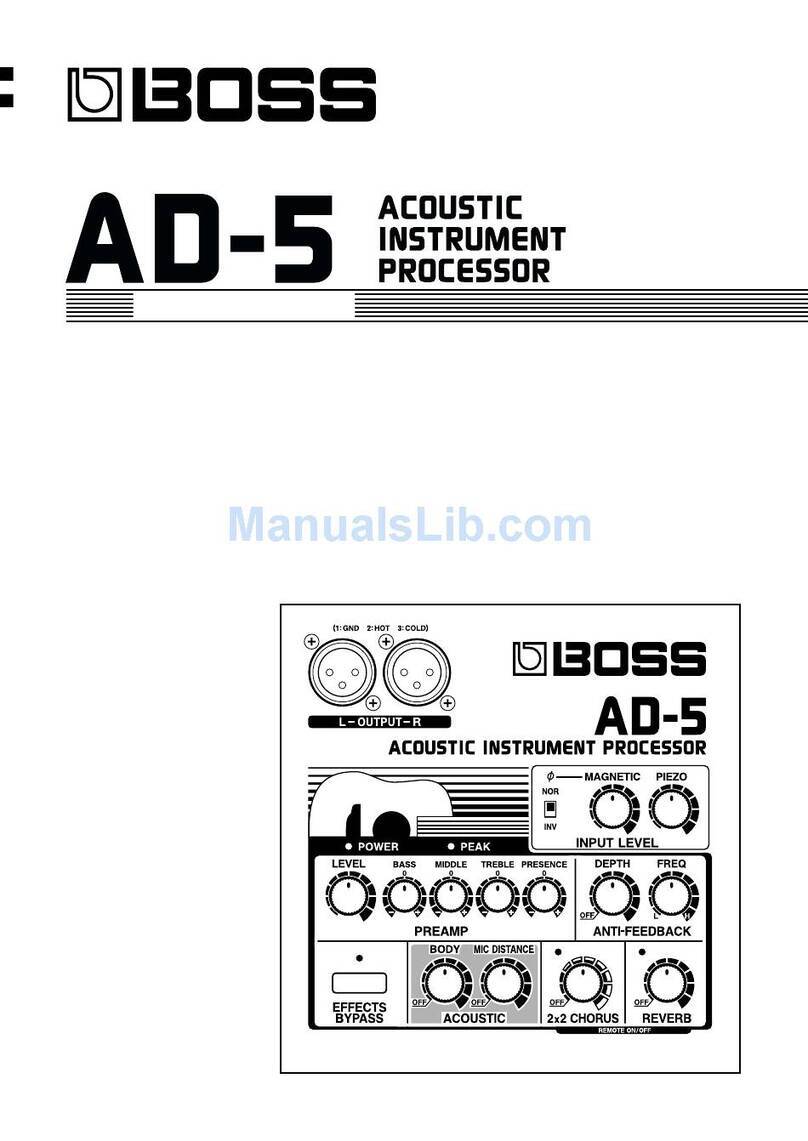
BOSSCO
BOSSCO AD-5 User manual
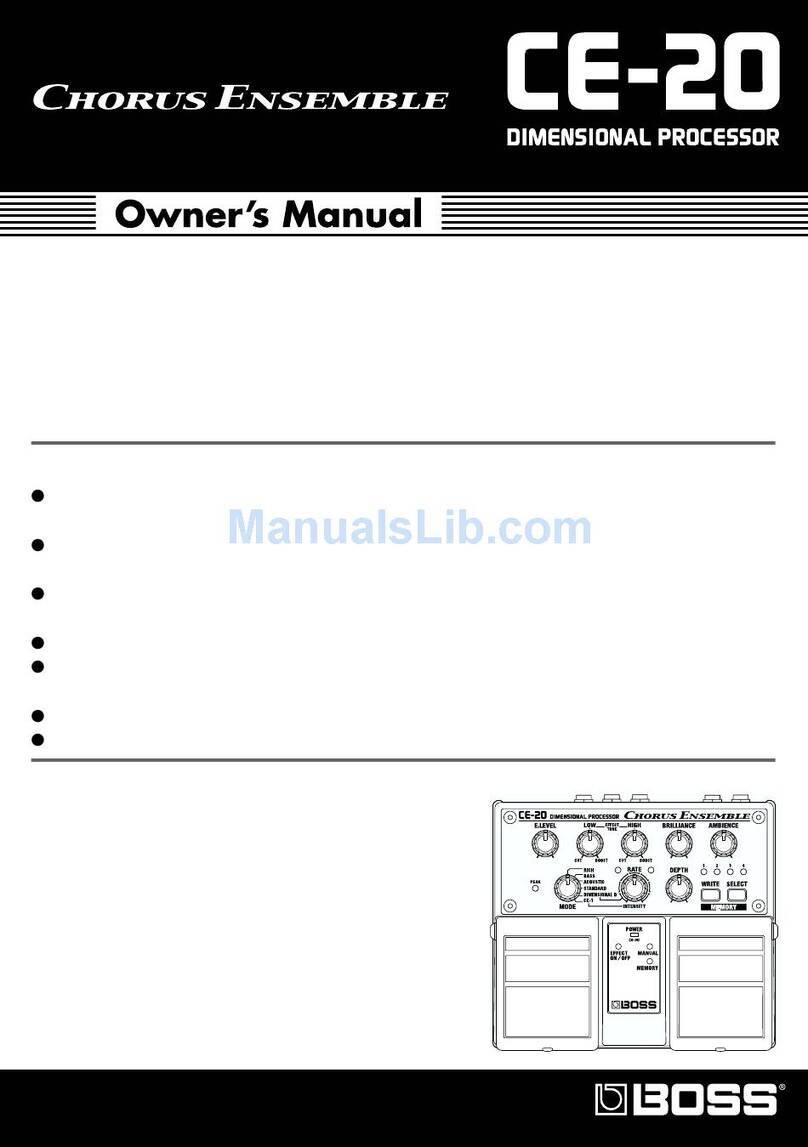
BOSSCO
BOSSCO Chorus Ensemble CE-20 User manual

BOSSCO
BOSSCO RRV-10 User manual

BOSSCO
BOSSCO GT-1000 User manual
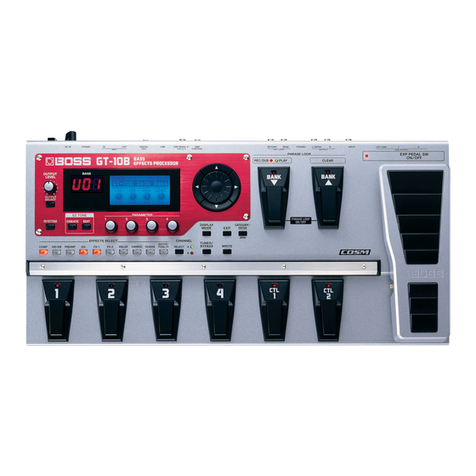
BOSSCO
BOSSCO GT-10B User manual
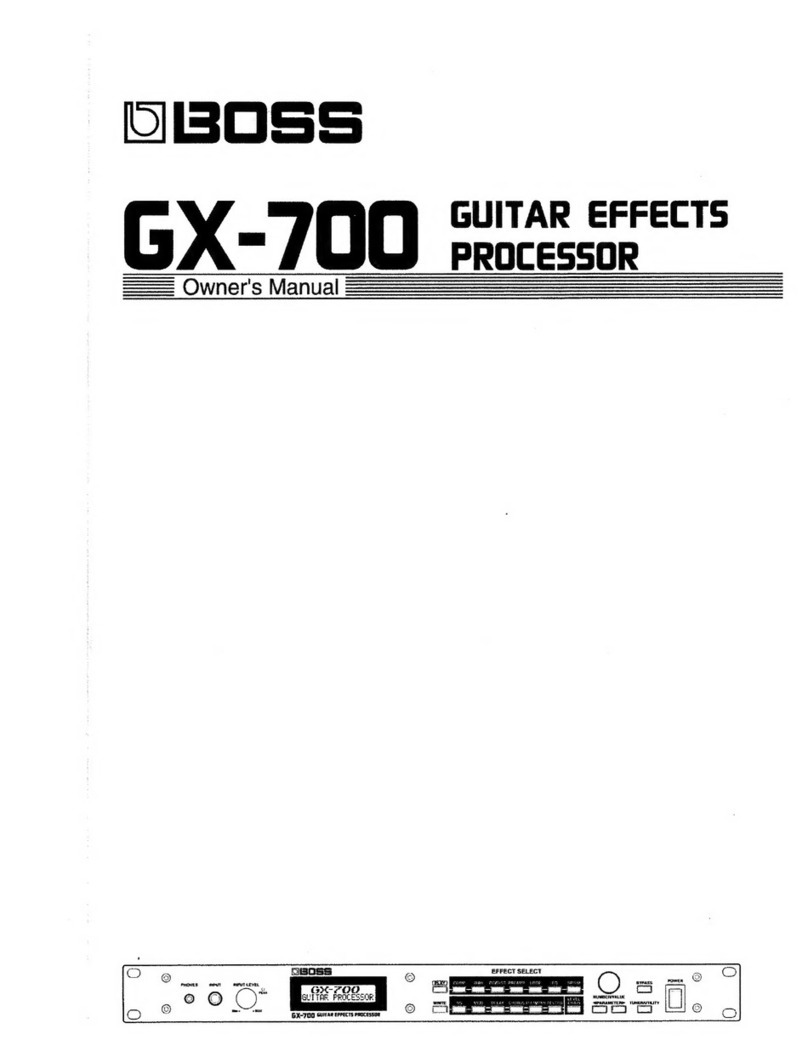
BOSSCO
BOSSCO GX-700 User manual

BOSSCO
BOSSCO VE-5 Setup guide
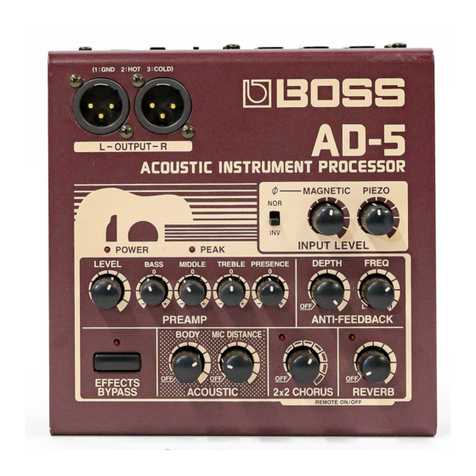
BOSSCO
BOSSCO AD-5 User manual
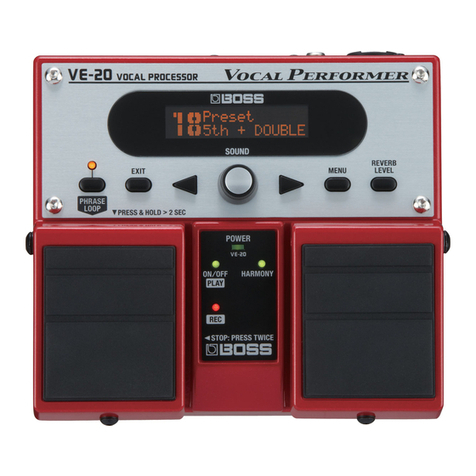
BOSSCO
BOSSCO Vocal Performer VE-20 User manual
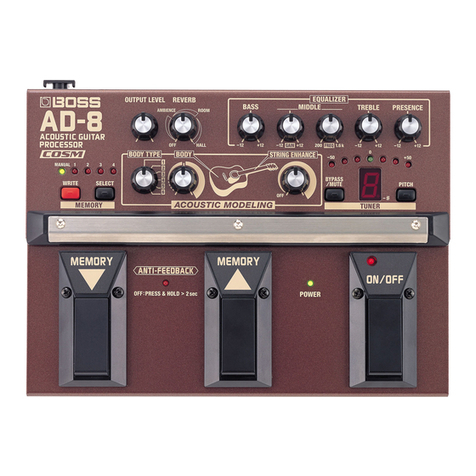
BOSSCO
BOSSCO AD-8 User manual
Popular Computer Hardware manuals by other brands
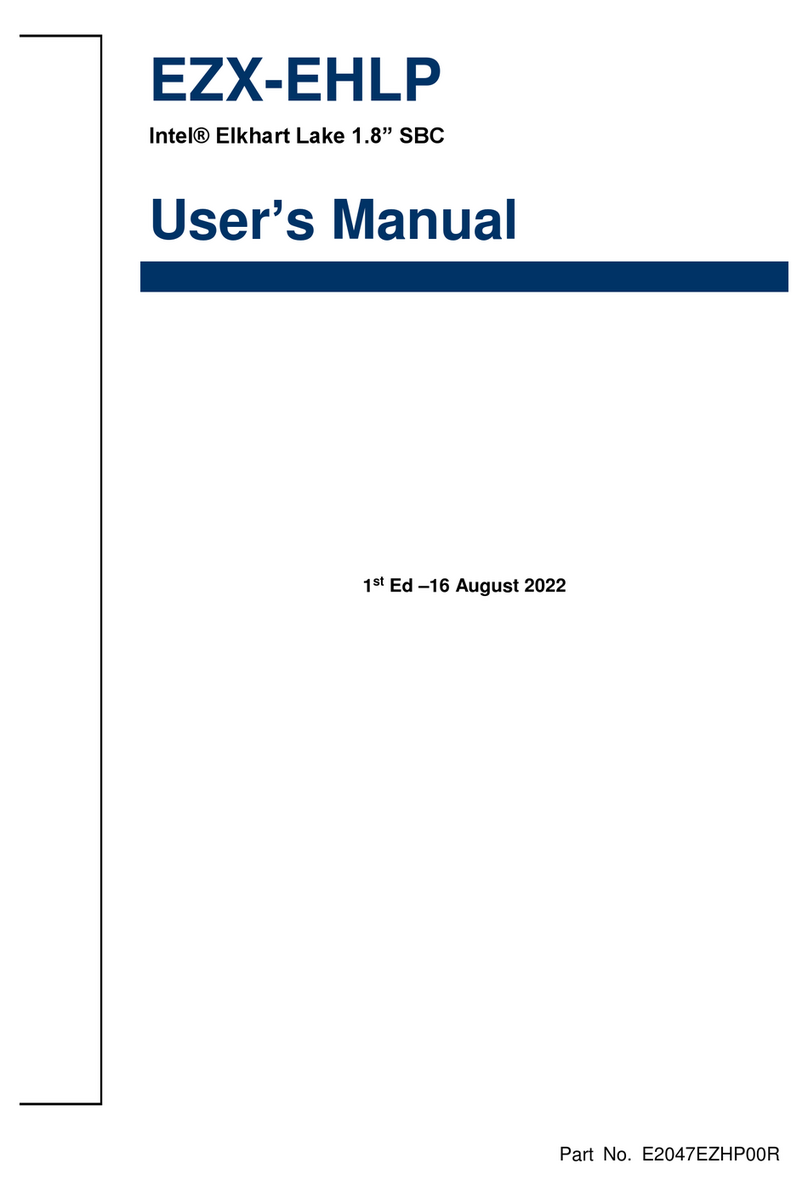
Avalue Technology
Avalue Technology EZX-EHLP user manual

Primera
Primera XR Series Brochure & specs

Ebyte
Ebyte E180-ZG120A user manual
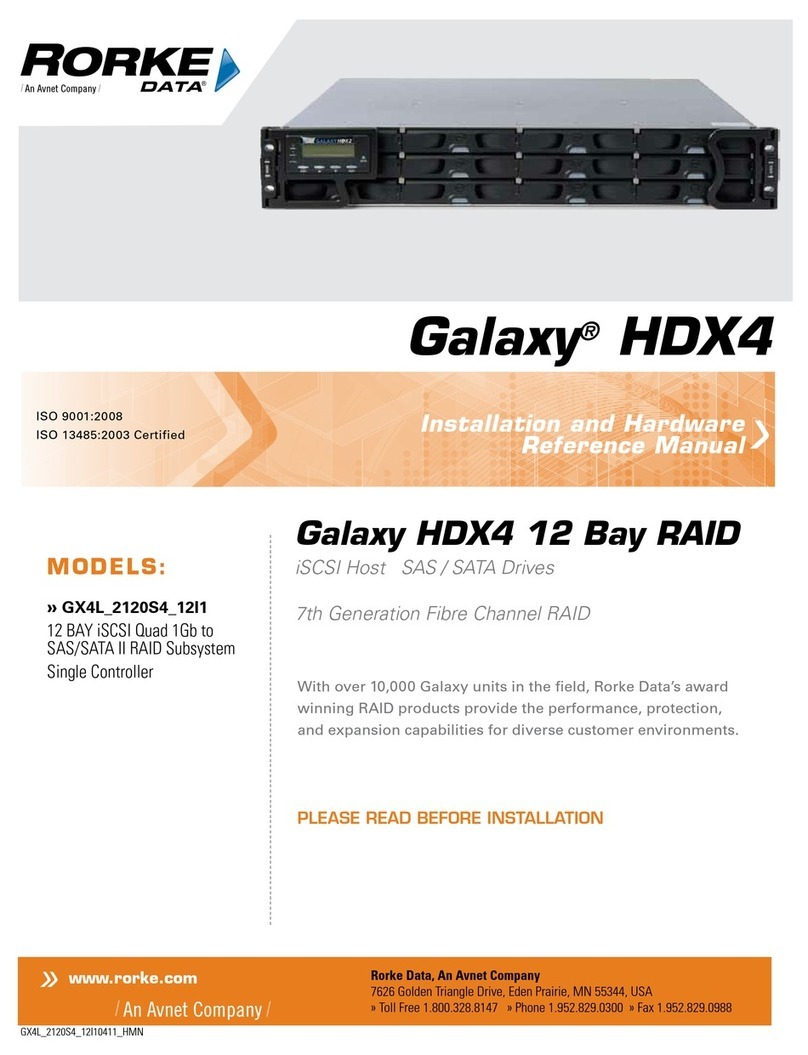
Rorke Data
Rorke Data GX4L_2120S4_12I1 Installation and hardware reference manual

American Megatrends
American Megatrends MegaRAID Express 500 Hardware guide
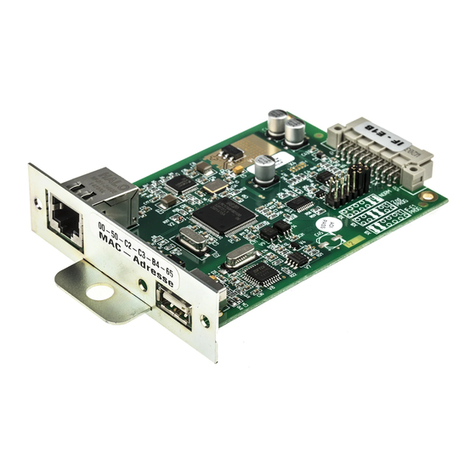
Elektro-Automatik
Elektro-Automatik IF-G1 user guide
